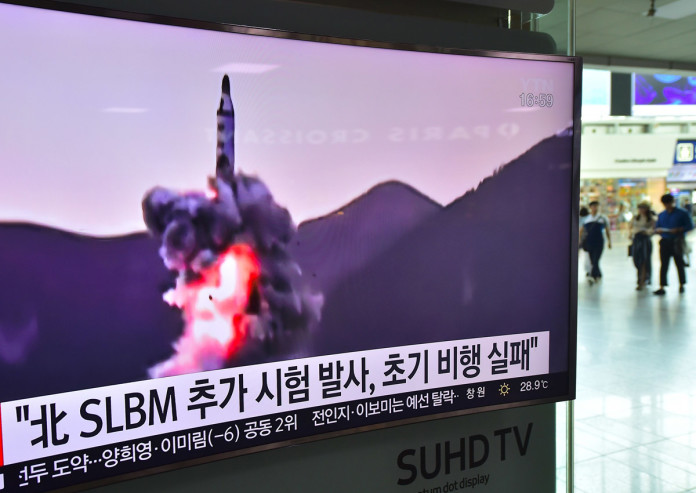SEOUL – North Korea fired a submarine-launched missile on Wednesday that flew about 500 km (311 miles) towards Japan, a show of improving technological capability for the isolated country that has conducted a series of launches in defiance of UN sanctions.
The missile was fired at around 5:30 a.m. (2030 GMT) from near the coastal city of Sinpo, where satellite imagery shows a submarine base is located, officials at South Korea’s Joint Chiefs of Staff and the Defence Ministry told Reuters.
The projectile reached Japan’s air defence identification zone (ADIZ), an area of control designated by countries to help maintain air security, South Korea’s Yonhap News Agency reported.
The distance of the flight indicated the North’s push to develop a submarine-launched missile system was paying off, officials and rocketry experts said.
North Korea’s “SLBM (submarine-launched ballistic missile) technology appears to have progressed,” a South Korean military official told Reuters.
The launch comes two days after rival South Korea and the United States began annual military exercises in the South that North Korea condemns as a preparation for invasion, and has threatened retaliation. “I think it was probably successful,” said Jeffrey Lewis of the California-based Middlebury Institute of International Studies.
“We don’t know the full range, but 500 km is either full range or a full range on a lofted trajectory. Either way, that missile works.”
The US Strategic Command said it had tracked what it believed to be a KN-11 submarine-launched ballistic missile and confirmed it flew about 300 miles.
Joshua Pollack, editor of the US-based Nonproliferation Review, said a claim to having mastered the SLBM technology is as much about prestige as a military breakthrough, a status enjoyed only by six countries including the United States, Russia and China.
“I think it’s meant foremost as a demonstration of sheer technical capability and a demand for status and respect,” Pollack said.
The launch came on the same day that the foreign ministers of China, Japan and South Korea were scheduled to meet in Tokyo.
“This poses a grave threat to Japan’s security, and is an unforgivable act that damages regional peace and stability markedly,” Japanese Prime Minister Shinzo Abe told reporters, adding that Japan had lodged a stern protest.
GROWING ISOLATION
North Korea has become further isolated after a January nuclear test, its fourth, and the launch of a long-range rocket in February which brought tightened UN sanctions.
It has launched numerous missiles of various types this year, including one this month that landed in or near Japanese-controlled waters.
The next step for the North would be to acquire a fleet of submarines large and quiet enough and with a longer range to evade surveillance, experts said.
“They keep conducting nuclear tests and SLBMs together which means they are showing they can arm SLBMs with miniaturised nuclear warheads,” said Moon Keun-sik, a retired South Korean navy officer and an expert in submarine warfare.
North Korea has claimed this year to have miniaturised a nuclear warhead to fit on a ballistic missile but outside experts have said there is yet to be firm evidence to back up the claim.
Tensions on the Korean peninsula were exacerbated by the recent defection of North Korea’s deputy ambassador in London to South Korea, an embarrassing setback to the regime of North Korean leader Kim Jong Un.
The North’s missile tests this year include a launch from a submarine last month that appeared to have failed, according to South Korea’s military.
The July launch came a day after South Korea and the United States announced plans for the South to host a sophisticated US anti-missile system.






